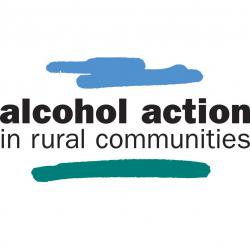GrogWatch supports and encourages communities to take action against alcohol-related harms, but what are the areas where community can make the most impact? Grogwatch asked Anthony Shakeshaft, Associate Professor and Deputy Director of the National Drug and Alcohol Research Centre to explain a significant study he recently undertook on the topic.
The idea of communities designing and implementing their own strategies to tackle rates of risky alcohol consumption and harm is attractive, but does it actually work? This is exactly the question we set out to answer in the NSW-based Alcohol Action in Rural Communities (AARC) project1. This project involved 20 communities, used the strongest possible evaluation design (a cluster randomised controlled trial) and ran over 5 years.
The key findings were:
- Communities themselves like the idea of a community action approach: 86% of respondents agreed or strongly agreed that local action would reduce alcohol-related harm in their area2.
- Communities do value reductions in alcohol-related harm: respondents reported that, on average, their household would be willing to pay about $45 every year to reduce alcohol harm by 10%3.
- There were significant differences between communities in their rates and causes of alcohol-related harms. This reflects the need for communities to take an approach that tackles the biggest issues in their areas1.
- The biggest impacts from community action were on the harms that occur most often, including verbal abuse, intimidation, offensive conduct and wilful extreme exposure such as public urination. Communities that took action slowed the increase in alcohol-related harm in their area compared to communities that didn’t act1.
- Activities that made a difference in the community included reporting rates of alcohol crimes through the media, engaging with high-risk groups (e.g. interactive sessions on alcohol harms with high school students and working with local businesses to ensure they had adequate alcohol workplace polices), and encouraging GPs, pharmacists and hospital staff to provide more screening and harm reduction information for patients.
- It was more difficult for communities to reduce the less common, but more serious incidences, such as violent assaults4.
The AARC project shows there is a legitimate role for community action against alcohol-related harm. But AARC also shows that communities need the support of governments that can address the most extreme problems caused by alcohol and reduce the rate of alcohol-related harm1. We live in a very alcohol-centric society, where some types of alcohol can be purchased relatively cheaply, alcohol advertising is widespread with few controls, and alcohol is readily available. The fact that community action works in some areas does not mean governments can ignore the potential effectiveness of tightening regulatory control of the advertising, availability and price of alcohol.
References
1. Shakeshaft A, Doran C, Petrie D, Breen C, Havard A, Abudeen A, Harwood E, Clifford A, D’Este C, Gilmour S, Sanson-Fisher R. The Alcohol Action in Rural Communities (AARC) Project. Working with communities to select, implement and measure the impact of strategies to reduce alcohol-related harm. Foundation for Alcohol Research and Education.
2. Czech S, Shakeshaft A, Breen C, Sanson-Fisher R. Whole-of-community approaches to reducing alcohol-related harm: what do communities think? Journal of Public Health, 18, 543-51, 2010.
3. Petrie D, Doran C, Shakeshaft A. Willingness to pay to reduce alcohol-related harm in Australian rural communities. Expert Review of Pharmacoeconomics and Outcomes Research, 11, 351-63, 2011.
4. Navarro HJ, Shakeshaft A, Doran CM, Petrie DJ. A multi-strategy community approach to reduce alcohol-related violent crime incidents: a cost-benefit analysis. Under review (contact author for details).
This article was first published on Grogwatch. For more on this research into a community's capacity to influence alcohol consumption and related harms, see the Alcohol Action in Rural Communities project.


